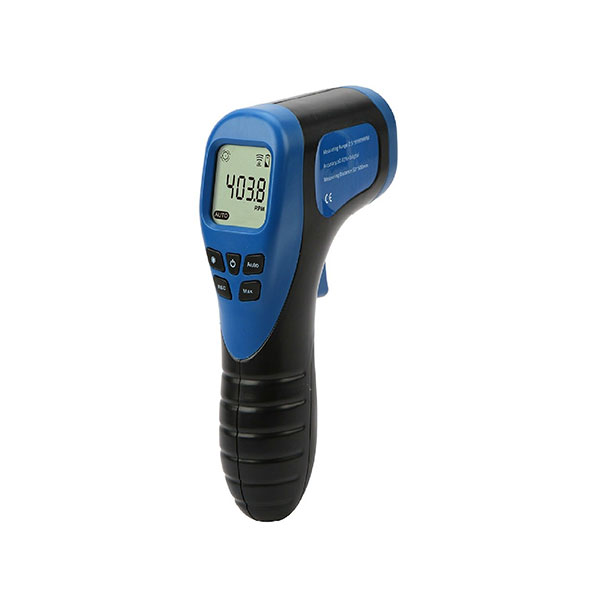Comprehensive Guide to Recognizing and Making Use Of a Tachometer Successfully
Comprehensive Guide to Recognizing and Making Use Of a Tachometer Successfully
Blog Article
Exploring the Functions and Advantages of a Tachometer: A Comprehensive Guide for Car Fanatics
In the world of automotive instrumentation, the tachometer stands as an important tool that uses drivers beneficial understandings right into their car's efficiency. tachometer. From providing real-time information on engine speed to helping in maximizing equipment shifts, the tachometer acts as more than just a dial on the dashboard. Its diverse functions not only improve driving experience but additionally play an essential function in maintaining engine wellness and efficiency. As we explore the complex operations and benefits of a tachometer, a much deeper understanding of its relevance for automobile lovers and experts alike will unravel.
Understanding the Essentials of a Tachometer
In the world of automobile instrumentation, recognizing the basics of a tachometer is necessary for any cars and truck enthusiast looking to dive into the complexities of engine efficiency monitoring. A tachometer, typically presented on the dashboard of a car, gauges the engine's revolutions per minute (RPM)
Tachometers normally have actually a scale marked in transformations per min, with a redline indicating the maximum speed at which the engine can safely run (tachometer). This details is vital for avoiding engine damages and maximizing equipment changing for manual transmissions. Additionally, tachometers can help in identifying engine problems such as misfires or a falling short ignition system by detecting irregular RPM readings
Value of Checking Engine Rate

The engine rate, measured in changes per minute (RPM), suggests how fast the engine's crankshaft is turning. Keeping an eye on engine rate is especially vital during equipment changes, as it aids motorists determine the ideal time to transform equipments for smooth acceleration and efficient gas consumption.
Furthermore, tracking engine rate can additionally provide beneficial insights into the total health of the automobile. Uncommon changes in RPM may suggest concerns such as a blocked air filter, fuel system issues, or also engine misfires. By discovering these problems early on with the tachometer analyses, vehicle drivers can deal with prospective problems without delay, preventing much more serious damages and pricey repair work down the line. Overall, keeping track of engine rate with a tachometer is a fundamental technique that can enhance driving performance, lengthen engine life, and ensure a safer and more pleasurable driving experience.
Enhancing Efficiency Via Gear Shifts
Appropriate equipment moving guarantees that the engine operates within its optimum power band, enabling for smooth acceleration and boosted gas economy. When shifting equipments, it is critical to pay interest to the engine rate suggested on the tachometer.

To achieve peak efficiency through equipment shifts, drivers ought to practice smooth and timely transitions between equipments, matching engine rate with roadway rate to harness the complete potential of their lorry's powertrain.
Making Best Use Of Performance With a Tachometer
Understanding the art of equipment shifting in high-performance vehicles not only improves driving experience yet additionally plays a crucial duty in making the most of effectiveness with a tachometer. tachometer. By paying close attention to the tachometer readings, chauffeurs can optimize their gear changes to operate within the engine's most efficient variety. When accelerating, shifting gears at the ideal RPM suggested by the tachometer can websites stop the engine from straining or underperforming, causing improved fuel efficiency and total performance
In addition, a tachometer assists drivers stay clear of unneeded revving, which not only squanders gas but likewise puts unnecessary strain on the engine. Regularly monitoring the tachometer while driving allows for smoother equipment transitions, lowering wear and tear on the transmission system in time.

Advanced Tips for Tachometer Application
To right here dig right into sophisticated ideas for tachometer use, consider integrating the use of change lights. Change lights go right here are aesthetic signs that light up when it's time to move gears based on engine changes per minute (RPM), enabling for seamless equipment changes without constantly keeping an eye on the tachometer. By fine-tuning shift factors and establishing advising thresholds, drivers can maximize velocity and engine efficiency while lessening the risk of over-revving.
Conclusion
To conclude, the tachometer acts as a critical device for car enthusiasts to keep an eye on engine rate, boost efficiency with equipment shifts, and make the most of efficiency. By understanding the features and benefits of a tachometer, vehicle drivers can maximize their driving experience and prolong the lifespan of their car. Making use of advanced suggestions for tachometer utilization can further boost driving skills and total performance when traveling.
Report this page